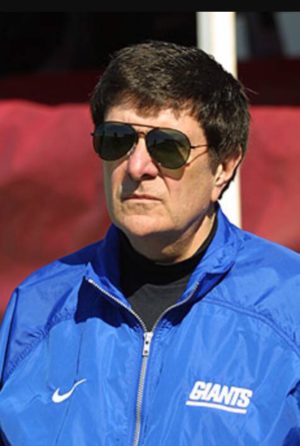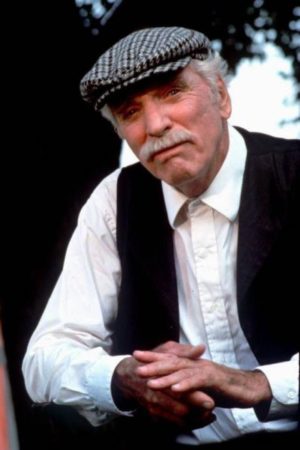Featuring Our Guest Columnist, Ernie Accorsi


While Dick Stockton is out on vacation, please enjoy our Guest Columnist.
By Ernie Accorsi
Before I began a 45-year career in National Football League front offices I spent five years as a sportswriter with the Charlotte News, Baltimore Evening Sun and the Philadelphia Inquirer. That transition seems quite unusual today but it was not in the 1960s.
When I graduated from Wake Forest University in 1963 the Commissioners of the three major professional leagues, Pete Rozelle of the NFL, Ford Frick of Major League Baseball and Walter Kennedy of the NBA were all former sportswriters and sports public relations directors.
Pete Rozelle
Additionally, Orioles General Manager Frank Cashen and their VP of Player Personnel Harry Dalton, Cleveland Indians General Manager Gabe Paul, National League President Warren Giles, and Dallas Cowboys General Manager Tex Schramm were also former newspaper and PR men.
So, if you wanted to be an executive in professional sports, the newspaper route was a common path to follow. And it didn’t hurt that all of those men were successful.
There were no internships, NFL and NBA front offices were small, maybe three or four people, maybe one scout. Baseball organizations were a little larger but still small by today’s standards.
I wanted to be a baseball General Manager and off I went, following the road map of people who went before me.
I was only with the Charlotte News for six months before I received my Army draft notice and left for military service, but not before I had one of the most remarkable experiences of my career. And, I wasn’t even aware of its impact until 30 years later. I was only with the paper for a little over a week when the sports editor, my first boss Ron Green, told me to cover a luncheon honoring the 1902 Charlotte Hornets Minor League Baseball team that had won 25 straight games that summer in the North Carolina League They were so good and so far ahead in the standings that the league just disbanded.
I was a rookie reporter with one week’s experience and had no idea what I was doing. I asked, “Who was the star player of this 1902 team?” I was directed to a 82-year-old man and I was introduced to Dr. Archie Graham.
I interviewed him, wrote an article about him and the team. He explained that he made it to the New York Giants. Batted one time and walked then broke his leg and never batted again in the major leagues. We took a picture of him, ran it in the paper the next day along with the article. Since it was my first job I kept a scrapbook. I pasted the article in my book and that was the end of it.
Thirty years later, on the 30th anniversary of the assassination of President John F. Kennedy, I went to my mother’s attic in search of my scrapbook because I wanted to find an article I had written about President Kennedy right after the assassination.
By this time, I had seen the iconic Baseball movie “Field of Dreams,” still my favorite sports movie of all time. As I paged through the scrapbook, I was stunned to find my first bylined article on the 1902 Charlotte baseball team and my interview with Dr Archie Graham.
It was at that moment that I realized that as a 21-year-old rookie sportswriter I had interviewed the “real Moonlight Graham,” played in the great movie by Burt Lancaster. Chills went up and down my spine. I still have that article and it’s framed in my New York apartment.
Actor Burt Lancaster as Moonlight Graham
One would think that the interview with Moonlight Graham was the highlight of a brief, rather undistinguished newspaper career. To say the least it seemed that I peaked too early.
But I had one more journalistic moment in the sun.
In 1968 at the Philadelphia Inquirer, I was the Philadelphia 76ers and NBA beat writer.
In the early summer, with the season over, I was working the copy desk fairly late on an uneventful evening. The copy boy answered a call and yelled out to me that I had a call on line #1. I took it and
a very calm, articulate adult said, “Ernie, I’m just a fan but I had dinner tonight at the Wayne Inn
(on the suburban Main Line) and was eavesdropping on a conversation at the table next to me. It was between the owner of the 76ers Irv Kosloff and his PR guy. They were discussing that they had traded Wilt Chamberlain to the Los Angeles Lakers but couldn’t announce it for three or four days.”
The caller then mentioned who the 76ers were receiving in return. Two of the players were Archie Clark and Darrell Imhoff.
Obviously, a newspaper office receives calls like this one all the time. But it’s a reporter’s duty to investigate a tip like this. Plus, this individual sounded creditable even though he wouldn’t give me his name. I went over to the Sports Editor Ron Smith and told him I was going to have to follow this trail. Our star sports columnist, the great Frank Dolson, was in the office writing his column for the next day I had discussed it with him and he said he would start calling his sources.
The first thing I did was call the 76ers General Manager Jack Ramsay. The wrinkle here is that I had been the sports information director at St Joseph’s College two years before when he was the head coach. I knew him well.
What gave me pause was when I hit him with the question, “did you trade Wilt Chamberlain to the Lakers?” I shocked him. Dead silence but then came a sort of denial.
I called other sources with the 76ers and although everyone denied it I could tell they were stunned by the question. Dolson was getting the same reactions.
Dolson and I huddled with the sports editor and I said, “I feel strongly that we have nailed this story. I think we should go with it.”
Smith went into the Managing Editor’s office and they called me in. The managing editor of a newspaper is like a regimental Commander and about as warm and friendly. He challenged me and peppered me with questions.
I told him I was committed to the story. He looked at me and said, “Ok Accorsi. We’re going with this on a page one of the newspaper and we’re copywriting it. If you’re wrong, you’re going to be covering 14-year-olds in swim meets at the Philadelphia Cricket Club.”
Wilt Chamberlain was the biggest sports star in the city. Still may be for that matter.
I wasn’t wrong. It was the biggest story I ever wrote.
Thirty-one years later when I was General Manager of the New York Giants, I was honored at a sports banquet in Princeton, NJ. That same night, Dolson received a sportswriting award. When I spoke I recounted the Wilt Chamberlain trade story and I related that as I started to type my story that night,
The byline I wrote was:
By Ernie Accorsi and Frank Dolson
I mentioned that Frank told me, “ take my name off the byline I’ve had plenty of glory. This is your shot. I don’t want you to have to share it.”
I thanked him publicly. When Frank got up to speak, he said, “Thank you, Ernie, but the reason I wanted my name off the byline that night is that I didn’t think you were right.”
One last kicker to this story.
On March 2, 1962, Wilt Chamberlain scored 100 points in an NBA league game in Hershey, PA, my hometown. Growing up in Hershey, I saw every sporting event played there from 1949 into the 1960s. I did not see Chamberlain score 100 points that night Hershey. I was a junior at Wake Forest and at the Atlantic Coast Conference basketball tournament in Raleigh, NC.
Wilt Chamberlain



